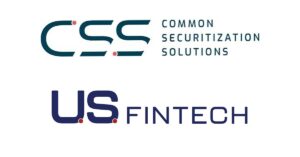The mortgage industry has gone through many crises in the past and the COVID-19 pandemic is just the most recent. The companies that survive the next year or two will need to use technology to confront pandemic-induced challenges.
Much has been learned during the health crisis. Mortgage companies quickly transitioned from large brick-and-mortar facilities with disparate technology solutions into customer-centric and virtual business models. Many companies were ahead of the curve because innovation was solidly embedded in their corporate DNA. But tactical innovation became a necessity for the companies that lacked a plan for rapid and effective business transformation.
Several tipping points have occurred for the industry over the past four decades. These include the double-digit interest rates of the 1980s.
History has demonstrated how key industrywide issues have affected mortgage innovation. In many cases, actual paradigm shifts caused widespread innovation. Some may believe that the mortgage industry opposes change — i.e., “If it ain’t broke, why fix it?” Once innovation is adopted by competitors, however, and mortgage companies begin to lose market share, change becomes an essential component of survival.
Refi frenzy
An empirical review of residential mortgage rates in 2020 reveals more than a dozen new low-rate records as the year transpired. According to the Mortgage Bankers Association (MBA), the average contract interest rate for 30-year fixed-rate conforming loans decreased to 2.85% at the end of last year. Consequently, this spurred a frenzy of historically high refinance volume.
In addition to the declining rates that drove refi volume, the COVID-19 pandemic literally forced many companies that were resistant to tech changes to adopt remote-accessible solutions for their nationwide teams that previously were domiciled in large operations facilities. Normally, strategic planning is a key component of a business plan, but 2020 transitioned strategic planning into tactical survival. Companies had to adapt quickly to stay in business.
The pandemic forced the entire mortgage industry to accelerate tech adoption without much time to effectively align the best tools to its respective strategic needs. Anyone who has reviewed the MBA’s 2021 forecasts knows that refinance volume is soon to slow. As of this past July, refi origination volume was predicted to decrease this year by 19% to $1.94 trillion while purchase originations were expected to rise 14% to a new record of $1.64 trillion.
Residential mortgage servicers are being heavily challenged. According to Black Knight, there were about 9 million refinances in 2020, but more than 80% of these loans were not retained by the previous servicer. This creates vast revenue losses for servicers and a reduced return on investment for each whole loan or bondholder. This challenge can be remedied, however, with the proper data-driven automation.
Of course, there was no shortage of mortgage applicants last year. Black Knight reported a record-breaking $4.3 trillion in originations in 2020, including $2.8 trillion in refinances and $1.5 trillion in purchase loans, the latter of which was the largest annual volume since 2005.
With overall volume predicted to slow somewhat this year, how do mortgage companies maintain their market share? The simple answer is that they’ll need to provide the easiest origination process, offer the most competitive rates and significantly decrease the time from application to closing. In many cases, this is easier said than done.
Purchase shift
About 63% of U.S. homeowners have a mortgage and roughly 6.5 million homes are sold nationwide each year. Consequently, the total market cap for purchase-loan transactions this year is about 4.1 million loans. Lenders that can deliver measurable value will grow their market share and those that cannot will struggle. All lenders and originators need an aggressive purchase-money plan, especially with the housing boom expected to slow down in 2022.
There are several paths to achieving purchase-market growth. Lenders may look to focus on channels such as qualified mortgages, nonqualified (non-QM) loans and jumbo loans. Nonagency qualified mortgages — which can be loosely defined as loans that aren’t intended to be sold to the government-sponsored enterprises but, in practicality, may actually meet agency guidelines — are another consideration. Many institutional investors have a growing appetite for these loans and are delivering aggressive secondary market pricing to entice new sellers.
Jumbo loans are mortgages that exceed the maximum conforming loan amounts established by Fannie Mae and Freddie Mac. The current conforming loan limit is $548,250 and ranges up to $822,375 in high-priced markets. One of the key challenges in offering non-QM and jumbo mortgages is the lack of a universal, automated delivery platform open to all investors.
Regarding conforming loans, Fannie and Freddie have standardized the loan delivery process and are increasingly focused on the metadata of each asset. Unfortunately, an open and standardized delivery solution does not exist for nonagency mortgages. Many non-QM and jumbo buyers have implemented their own solutions, but this creates a bit of an origination challenge for lenders that sell to multiple nonagency investors. These companies should look to a more comprehensive answer.
Moving forward
The IRS collected nearly $3.5 trillion in gross taxes in fiscal year 2020, and about 195 million returns and other forms were filed electronically. These e-filings represented 81.3% of all filings, an increase of 5.7 percentage points from the prior year. And about 94% of individual tax returns were filed electronically. The point is consumers are adapting to the ease of self-service solutions.
Fintech companies have successfully automated one or more segments of the mortgage ecosystem. The most effective answer for mortgage companies looking to shift their business model is a parallel platform that interacts with disparate systems of record, third-party providers and fintech segment solutions.
The addition of any new automation must provide measurable value to justify its adoption. In a perfect world, the adoption of software as a service (SaaS) should not include an upfront charge and the provider should be compensated based on the actual value delivered to users. Moving forward, SaaS providers need to become partners rather than being vendors that rely on long-term contracts with their clients.
The key to functionality for a next-generation, automated marketplace is to work parallel to current systems of record. This maximizes the initial investment in new tools and, on an interim basis, allows for “business as usual” performance. Platforms need to be able to push and pull data between myriad tech segments. Artificial intelligence needs to drive metadata in a tacit fashion, i.e., the workflows need to be driven by data rather than being reliant on highly experienced and well-compensated mortgage professionals.
The entire transmittal summary of a loan needs to be securely archived by an interoperable distributed-ledger technology otherwise known as blockchain. The key value proposition for this type of business solution is that it operates as a decentralized data mesh. This is a type of data-platform architecture that embraces the ubiquity of data in the enterprise by leveraging a domain-oriented, self-serve design.
In summary, a data mesh uses data wherever it “lives” and whenever it’s needed. Unlike data infrastructures that handle extraction, transfer and loading tasks via a centralized data lake, a data mesh supports distributed, domain-specific data producers and consumers, and it views data as a product.
● ● ●
The proverbial unicorn of the mortgage ecosystem is a next-generation, automated solution that allows all mortgage stakeholders to continue operating in their current tech environments while embracing a transparent and automated disruption. This will help companies to gain market share and deliver a client-for-life value proposition.
Change is often a difficult pill to swallow, but along with a concise and strategic business focus, the basis for great leadership is the courage to evolve. As billionaire business mogul Richard Branson said, “Every success story is a tale of constant adaption, revision and change.” ●
Author
-

John Heck is senior adviser of lending solutions at Capacity, a software-technology company that uses artificial intelligence to automate support for clients and employees. He has held senior-level positions at IBM, EMC², First American, Fidelity National Financial, PNC Financial and Citigroup. Heck’s passion is to transform the mortgage industry by delivering a digitally native and cloud-delivered mortgage platform, which standardizes asset creation based on investor needs while delivering a true value proposition for lenders and borrowers.
View all posts







